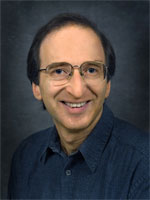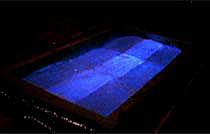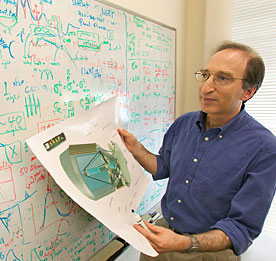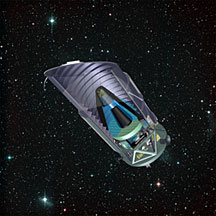| Research
|
|
||||||||||||||||||||||||
|
Check out the Office of Science's new Website.
|
ORNL research probes plaque-Alzheimer's linkHearing the word plaque would send anyone running from the dentist. The accretion of too much bacteria or even protein in one place, however, plays a major role in other serious diseases, specifically Alzheimer's disease. In this neurodegenerative disease, brain tissue and, consequently, cognitive abilities disintegrate; unlike dental plaque, however, doctors cannot scrape away the brain's build-up of a protein plaque called amyloid beta, as a dentist can. Alzheimer's researchers are not even sure whether the plaque build-up is the cause or result of the disease, they just know that the plaque grows among the cells. Amyloid beta is a fragmented piece of Amyloid Precursor Protein, which naturally occurs in the human tongue, liver, spleen, kidneys, heart and brain. Despite the bodies natural coding for this protein, the key to understanding any type of amyloid-related disease lies in quantifying how much of the protein and protein plaque are in the organs, says Justin Baba, a scientist at DOE's Oak Ridge National Laboratory. Baba is a biomedical engineer specializing in anatomical and physiological imaging. Working in collaboration with John Wall of the UT Graduate School of Medicine, Baba is using mice models suffering from amyloidosis, a disease-causing build-up of amyloid plaque, to try to correlate the level of plaque deposition with the severity of the disease. "There are two types of imaging that we run. The MicroCT scan is a high resolution x-ray scan that gives us anatomical data, it shows where the tissue and bones are," Baba says. The second type of imaging is a functional SPECT, single photon emission computed tomography, scan where scientists tag the protein plaque and figure out the area of highest buildup. "We inject an iodine-125, a gamma emitter, labeled antibody into the mouse model and it binds to the plaque. The functional imaging shows the physiology. We see where the gamma lights up, and then that becomes our area of interest," he says. Combining the two scans, Baba can isolate the area of activity and quantify the intensity counts of the scanned image. Wall then analyzes the mouse model's organs and counts the amount of radioactive substance in the corresponding organs. Together the scientists are working on correlating the real counts with the computer images to determine the amount of plaque deposited in the organs and to relate that to the amyloid disease. They hope to be successful in quantifying the degree of the amyloidosis disease based on this information. Eventually, scientists want to be able to analyze the human brain with a similar method. "The mouse models give us some useful information to determine the true degree of a disease," Baba says, "but it will take many years to develop a reliable discriminant for humans. The goal would be say, if we pick up this much activity from the tagged radioisotope, it correlates to this stage of Alzheimer's." Baba says that part of the problem with human studies is that the only way to quantify the plaque build-up is during autopsy. But with enough patients' counts, Baba believes that one day doctors will use the two types of imaging to diagnose the severity of the neurodegenerative disease. "One goal is to pick up Alzheimer's early. If we can pick up that someone is developing the disease, then we can use image scanning to test medications. You can see if the drug is reducing the plaque," Baba says. "The starting point is with mice and right now that is better than nothing—only time will tell."Ashley Yeager Submitted by DOE's Oak Ridge National Laboratory |




